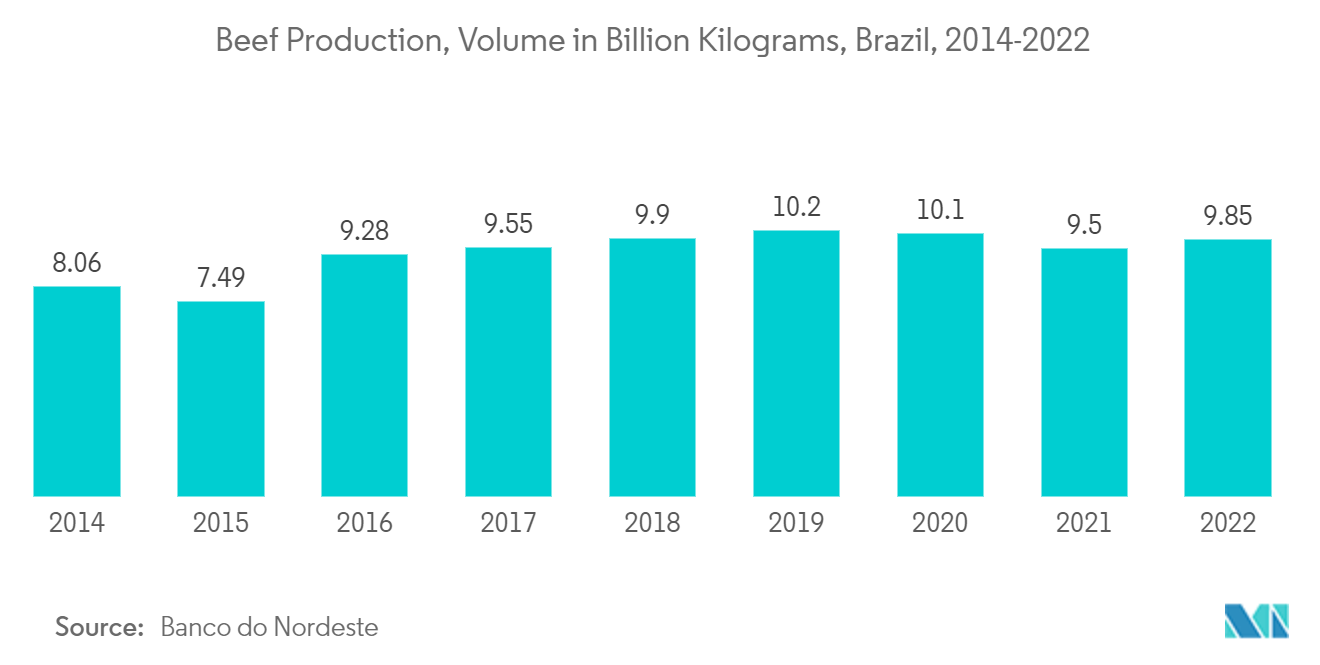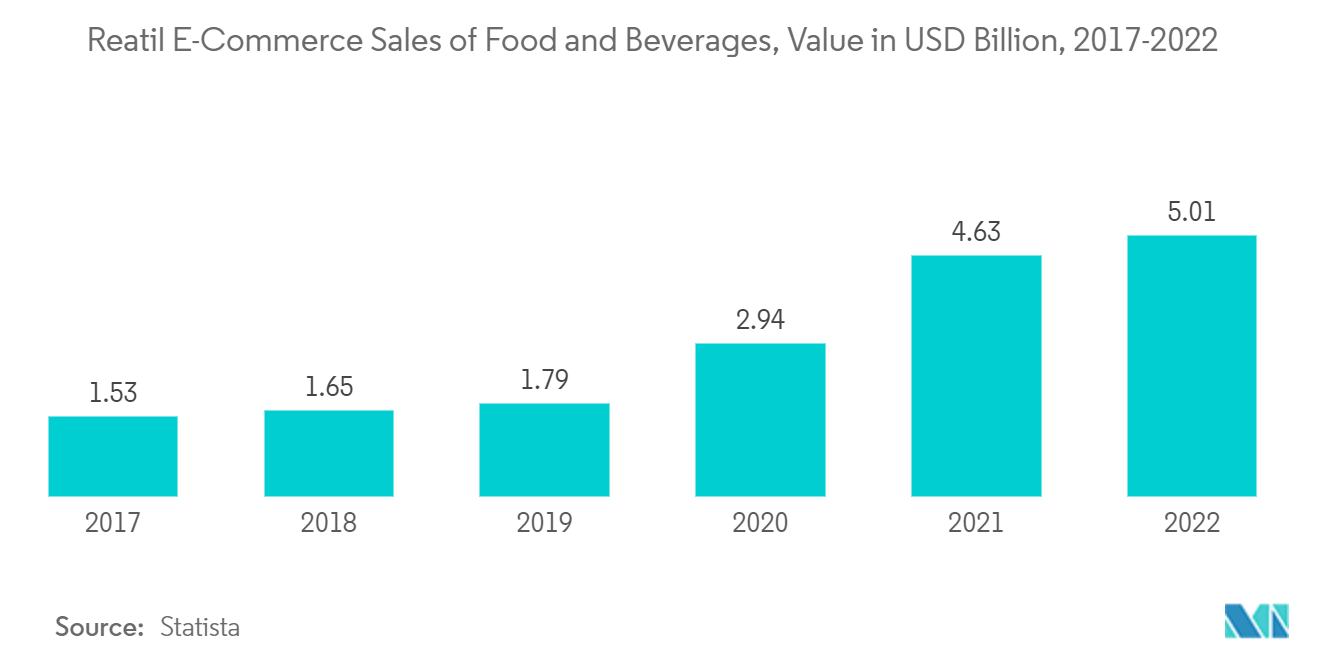Market Trends of Brazil Cold Chain Logistics Industry
This section covers the major market trends shaping the Brazil Cold Chain Logistics Market according to our research experts:
Increasing Meat Exports to Drive the Market
In 2021, the Brazilian meat sector faced serial difficulties. However, 2022 was more promising. The resumption of beef imports by China, beef and pork imports by Russia, and the continued high demand for these commodities globally encouraged the leading players in the sector. In November 2021, Russia announced zero import tariffs on beef and pork and import quotas for several countries, including Brazil. The expectation was that, in Q1 2022, the Russian government would carry out inspections to qualify new Brazilian plants for export.
In December 2021, China lifted the embargo on Brazilian beef. The restrictions began after cases of mad cow disease occurred in the states of Minas Gerais and Mato Grosso in September 2021. Brazilian beef exports registered consecutive drops in the following months since its largest buyer decided to suspend shipments. Following these lows, the meat sector has recovered and improved. This improvement is expected to continue, driving the Brazilian cold chain logistics market during the forecast period.
However, in Q2 2022, Brazil slaughtered a total of 6.96 million head of cattle, which was up by 6% (+362,000 head) compared to 2021. The Y-o-Y growth in slaughter has increased beef production by 6% (+105,000 ton) to 1.84 million ton. However, Brazil is the world's largest beef exporter, and the country exported more than 469,000 ton of fresh and frozen beef in Q1 2022, up by 37% (+126,000 ton) from Q1 2021. In 2022, according to the survey conducted by Banco do Nordeste, beef production in Brazil amounted to more than 9.9 billion kg, up by 4% compared to the previous year. Thus, the growing beef exports may drive the country's cold chain market.

Brazil’s Interest in Healthier Frozen Foods Driving the Market
Brazilian consumers have shown increasing interest in frozen food over the past years, and demand for healthier options also witnessed significant growth in the country. In addition, the frozen food manufacturing industry witnessed lucrative growth during the pandemic, and the consumption of healthier frozen foods increased. However, frozen food sales were majorly driven by consumers' behavior of seeking convenient products, helping them reduce store visits.
Brazil's frozen-food market comprises some of the country's major players in packaged food, including BRF and JBS. However, the sector is also being served by up-and-coming businesses. In addition, major companies in São Paulo, such as Liv Up, Beleaf, and Free Soul Food, directly sell frozen food to consumers through their online channels. Most of their product costs range between USD 1 and USD 5, which attracts customers.
Brazil exports its food and meat products to more than 22 countries. In Q1 2022, the food exports from Brazil to Arab Nations witnessed significant growth, as the total exports reached more than USD 3.8 billion, up by nearly 34% compared to the same period in 2021. Thus, the increasing exports and imports of frozen foods are expected to drive the cold chain market in the country. However, e-commerce sales of food and beverages are a major supporting factor for cold chain logistics. In 2022, food and beverages e-commerce sales reached more than USD 5 billion, at a growth rate of 8% compared to the previous year.


